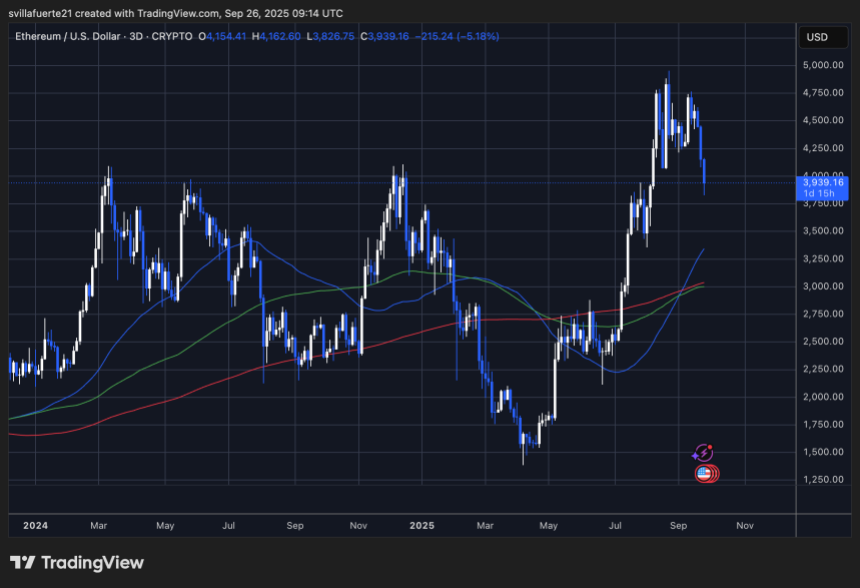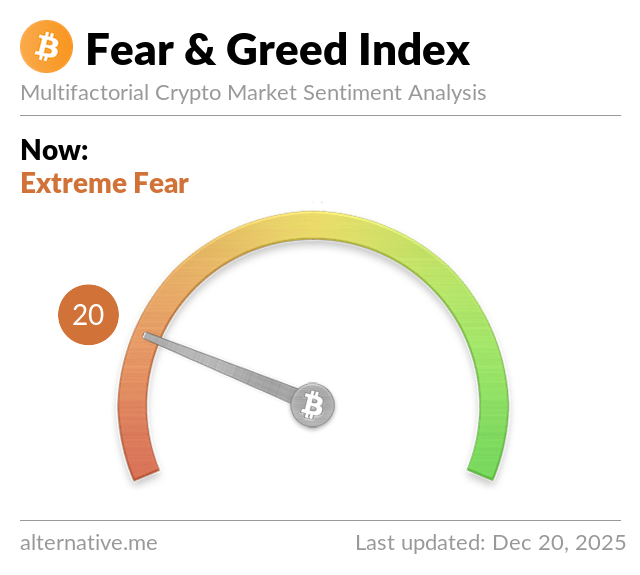Ethereum has recently dipped below the crucial $4,000 mark for the first time since early August, signaling a notable shift in investor sentiment. Following an impressive upward trajectory, ETH has suffered a nearly 20% decline since September 13. This downturn has left many traders feeling anxious about the next potential price movements. The prevailing market correction has introduced a layer of uncertainty; however, several analysts believe this may represent a pivotal reset beneficial for future growth.
Related Reading
Renowned analyst Darkfost has noted a significant shift in Ethereum’s Open Interest, identifying it as one of the most drastic resets seen since early 2024. He highlighted that the extension of bullish momentum had led to excessive leverage, which is now being corrected through a rapid contraction of positions—especially evident on platforms like Binance, where a significant share of recent ETH trading has occurred.
While the current price drop and negative sentiment might appear grim, analysts are spotting potential silver linings in this reset. A lower Open Interest tends to diminish the risk of cascading liquidations, thereby enabling the market to stabilize. For Ethereum, this might serve as a crucial test of its robustness in maintaining support levels, setting the stage for a resurgence when bullish momentum potentially returns.
Ethereum’s Open Interest Reset Marks a Turning Point
Darkfost elaborates that the recent recalibration of Ethereum’s Open Interest is not only essential but is also one of the sharpest observed resets this year. Typically, such resets follow periods where excessive leverage has driven Open Interest to unmanageable levels—something that was seen in ETH’s recent bullish trend. The cryptocurrency attracted significant market attention, driven by ETF speculation and robust accumulation trends, thus becoming susceptible to sudden liquidations.

As liquidations accumulate and Open Interest decreases, the immediate selling pressure typically lifts. This scenario encourages market stabilization and can often be the precursor to recovery. The process can be likened to a “cleansing” mechanism, purging overly extended traders and reestablishing balance within the market structure.
Notably, Binance reported the largest monthly drop in Open Interest, witnessing over $3 billion wiped out on September 23, followed by an additional $1 billion loss the following day. Meanwhile, Bybit saw a reduction of $1.2 billion, and OKX experienced a decline of approximately $580 million. These figures highlight the magnitude of the reset across principal derivatives platforms.
This contraction is indicative of a broader market recalibration, unwinding an atmosphere that has become perilously over-leveraged. For Ethereum, this could mark the commencement of a more sustainable phase, where diminished speculative pressure allows for organic demand and core fundamentals to wield greater influence on future trends.
Related Reading
Price Action Insights: Testing Critical Levels
Currently, Ethereum (ETH) is trading around $3,939, reflecting a sharp decline of over 5% in the latest session and extending its correction since the early September peak exceeding $4,700. This fall has pushed ETH beneath the significant $4,000 psychological level for the first time since August, indicating escalating selling pressure.

The chart illustrates ETH’s breakdown after forming a double-top pattern in the range of $4,700–$4,800, a classic indicator of reduced upward momentum. The rejection from this level has drawn ETH closer to its 50-day moving average (depicted in blue), which previously functioned as robust support during its rally. A decisive close beneath this average could pave the way for a deeper pullback toward the 200-day moving average (shown in red), presently located near the $3,100–$3,200 zone.
Related Reading
Despite the prevailing weakness, ETH remains within an overarching uptrend when analyzed from the July low around $2,200. This rebound established a firm bullish structure, and as long as ETH maintains levels above the $3,500–$3,600 area, its long-term outlook remains promising. In the immediate term, bulls must retake the $4,200 level to regain momentum, whereas failing to uphold current price levels could intensify selling pressure and test deeper support levels in the upcoming sessions.
Featured image from Dall-E, chart from TradingView











